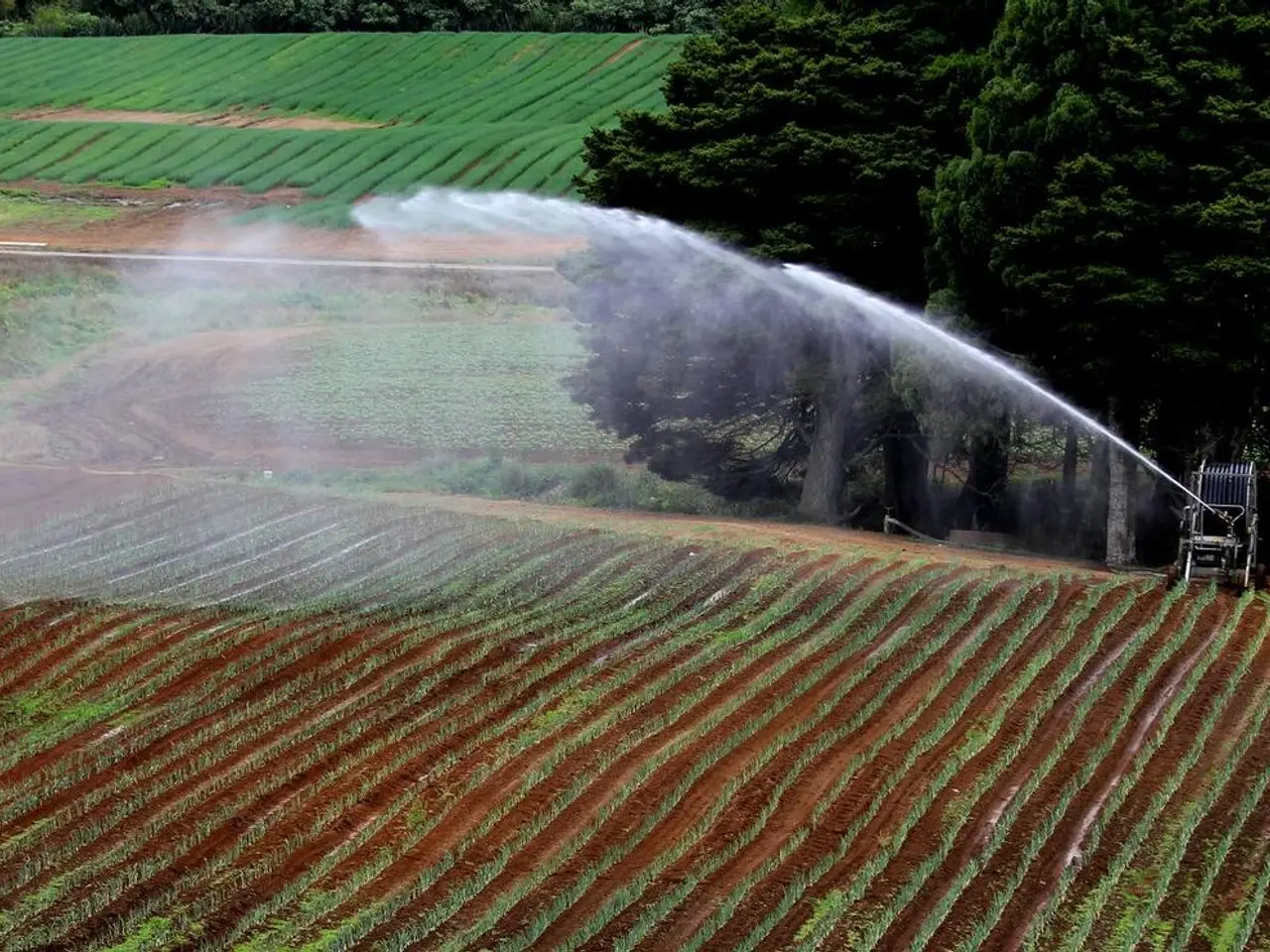Technology for Sustainable Agricultural Ecosystems in Permaculture
In the face of climate change and environmental challenges, a revolutionary approach to farming is gaining traction: Permaculture Climate Technology. This innovative blend of traditional agricultural practices and cutting-edge technology aims to create resilient, sustainable food systems that align with nature and promote ecological balance.
At the heart of permaculture lies the integration of food production, water harvesting, habitat, and waste management. By applying ecological principles, these closed-loop, low-impact systems preserve soil and biodiversity, making them a beacon of hope for a greener future.
One of the key advantages of permaculture is its resilience to climate fluctuations. Diverse plant species and interconnected design elements ensure that farms can withstand droughts, extreme weather, and other challenges posed by global warming. Moreover, permaculture supports local communities by utilizing indigenous and low-cost technologies, conserving resources, and maintaining long-term soil fertility.
In addition, permaculture is restoring degraded landscapes. Techniques such as water harvesting and syntropic farming are rejuvenating soil and enabling food growth in barren or desertified land. Furthermore, agroforestry elements integrated within permaculture designs enhance carbon sequestration and biodiversity, contributing to climate mitigation and ecosystem services.
Technological innovations are playing a pivotal role in the evolution of permaculture. Precision agriculture, for instance, uses advanced technology to help farmers monitor crop health, use resources efficiently, and boost farm productivity, all while lessening harm to the environment.
Sensors and data tools are now being used for real-time tracking of soil health, while AI-driven design tools, advanced biotechnology, precision sensor networks, and drone mapping and analysis technologies are emerging in the field. Advanced sensors measure soil moisture, nutrients, and microbes with high accuracy in real-time, providing farmers with the insights they need to make informed decisions.
Native plants, being natural heroes, are also a crucial part of permaculture. Having learned to live with local weather, they are strong against environmental stress, making them ideal for climate-resilient farming.
Permaculture systems are designed for extreme weather, using layers of plants, wind barriers, water management systems, and the shape of the land. These strategies make farms strong and flexible, enabling them to face the challenges of global warming head-on.
The USDA is also investing in this revolution, with grants totalling $14.2 million as of October 2022, supporting urban farms and new ways to grow food. Educational workshops and mobile learning applications are also being used for hands-on learning about sustainable farming methods online.
Local networks for resource sharing are exchanging seeds, tools, and skills using digital platforms, fostering a sense of community and collaboration. Collaborative community gardens are using digital tools for planning, sharing, and tracking garden progress.
Bioenergy from organic waste creates closed-loop energy cycles and cuts down on waste, while solar panels and wind turbines, with minimal impact on the landscape, can store energy for future use. Environmental monitoring tools offer deep insights into ecosystem health, helping farmers and researchers make informed decisions.
In essence, permaculture climate technology is a step towards a sustainable future, one where agricultural productivity and environmental stewardship walk hand in hand. By using nature-inspired, culturally rooted methods, we can build food systems that are not only sustainable and climate-resilient but also socially equitable.
- The integration of food production, water harvesting, habitat, and waste management is the core of permaculture.
- Permaculture systems are designed to preserve soil and biodiversity for a greener future.
- The resilience of permaculture to climate fluctuations is evident in its ability to withstand droughts and extreme weather.
- Permaculture supports local communities by utilizing indigenous technologies and resource conservation.
- restoring degraded landscapes is one of the benefits of permaculture through techniques like water harvesting and syntropic farming.
- Agroforestry elements in permaculture designs enhance carbon sequestration and biodiversity, contributing to climate mitigation.
- Precision agriculture uses advanced technology to help farmers monitor crop health, use resources efficiently, and boost productivity.
- Sensors and data tools are now used for real-time tracking of soil health in permaculture.
- AI-driven design tools, advanced biotechnology, precision sensor networks, and drone mapping and analysis technologies are emerging in permaculture.
- High-accuracy real-time sensors measure soil moisture, nutrients, and microbes in permaculture.
- Native plants, being strong against environmental stress, are ideal for climate-resilient farming in permaculture.
- Permaculture systems use layers of plants, wind barriers, water management systems, and land shape strategies to make farms strong and flexible.
- Grants from the USDA are being utilized to support urban farms and new ways to grow food through permaculture.
- Educational workshops and mobile learning applications are available for online hands-on learning about sustainable farming methods.
- Local networks for resource sharing exchange seeds, tools, and skills using digital platforms to foster a sense of community and collaboration.
- Collaborative community gardens are using digital tools for planning, sharing, and tracking garden progress.
- Bioenergy from organic waste in permaculture creates closed-loop energy cycles and reduces waste.
- Solar panels and wind turbines with minimal impact on the landscape can store energy for future use in permaculture, while environmental monitoring tools provide insights into ecosystem health.




